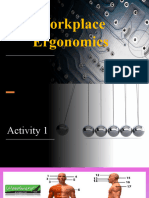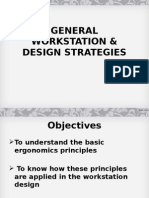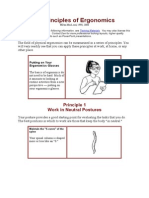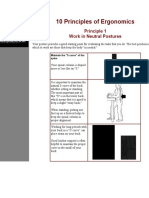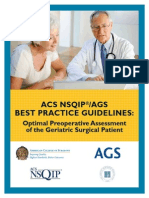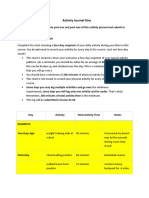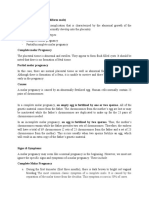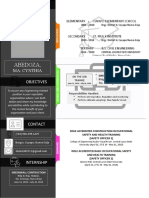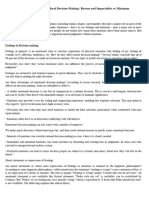0% found this document useful (0 votes)
151 views4 pages12 Principles of Ergonomics For The Workplace
The document discusses 12 principles of ergonomics for improving workplace safety and wellness. It defines ergonomics as designing the workplace and tasks to fit human capabilities. The principles include keeping items within easy reach, working at proper heights, reducing excessive forces and repetition, minimizing fatigue and direct pressure on the body, providing adjustability and clearances, and maintaining a comfortable environment. Examples are given for each principle like adjusting computer workstations and using proper lifting techniques.
Uploaded by
stercostasCopyright
© © All Rights Reserved
We take content rights seriously. If you suspect this is your content, claim it here.
Available Formats
Download as PDF, TXT or read online on Scribd
0% found this document useful (0 votes)
151 views4 pages12 Principles of Ergonomics For The Workplace
The document discusses 12 principles of ergonomics for improving workplace safety and wellness. It defines ergonomics as designing the workplace and tasks to fit human capabilities. The principles include keeping items within easy reach, working at proper heights, reducing excessive forces and repetition, minimizing fatigue and direct pressure on the body, providing adjustability and clearances, and maintaining a comfortable environment. Examples are given for each principle like adjusting computer workstations and using proper lifting techniques.
Uploaded by
stercostasCopyright
© © All Rights Reserved
We take content rights seriously. If you suspect this is your content, claim it here.
Available Formats
Download as PDF, TXT or read online on Scribd
/ 4


